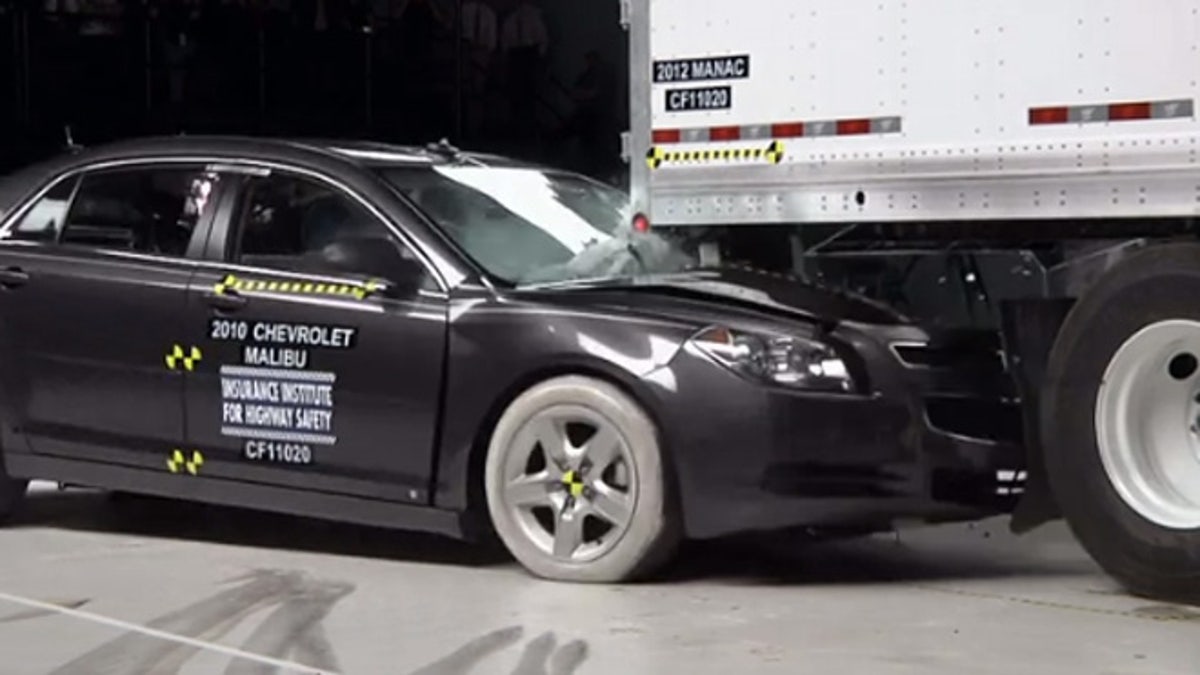
(IIHS)
Drivers who find themselves stuck behind tractor trailers on the highway or in traffic jams have probably noticed the metal bars that hang from the rear end of the trailers. They are there to prevent cars from slipping underneath, or underriding the trailers in collisions.
If people are skeptical regarding the effectiveness of the underride guards, they may have good reason to feel that way. The Insurance Institute for Highway Safety is releasing a report today that indicates trailer manufacturers have improved the guards in recent years, but that they still have weaknesses that endanger car occupants in a crash.
The IIHS, a safety research and testing group funded by the insurance industry, said guards that lack adequate strength can fail when a car strikes the rear end of a trailer. If the guard fails the front end of the car can slide under the trailer, leaving the windshield, windows, roof and roof pillars that form the car’s “greenhouse” especially vulnerable.
In 2011, 260 of the 2,241 passenger vehicle occupants killed in large truck crashes died when the fronts of their vehicles struck the rear ends of trucks. That’s a decrease from 460 out of 3,693 in 2004. Today’s report is a follow-up to one the IIHS released in 2011 when it petitioned the National Highway Traffic Safety Administration to upgrade the standard for underride guards.
IIHS said its crash tests show that while “guards are doing a better job than in the past,” most still allow “horrific underride” when cars hit the ends of the guards at speeds as low as 35 mph.